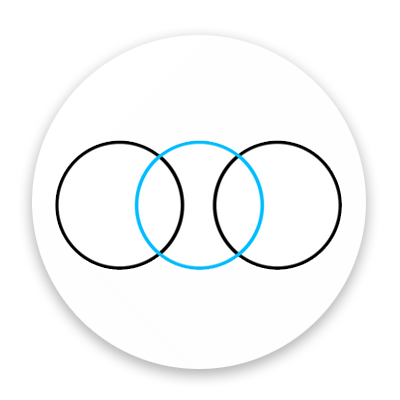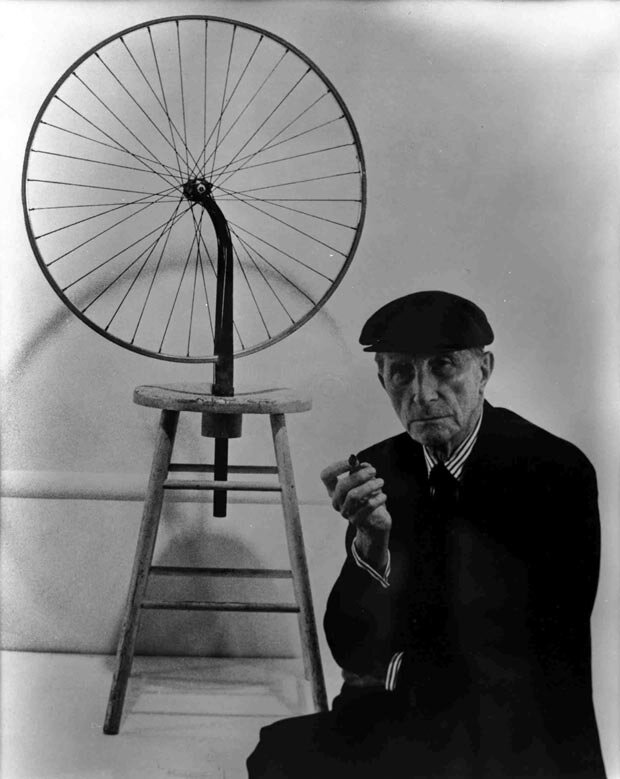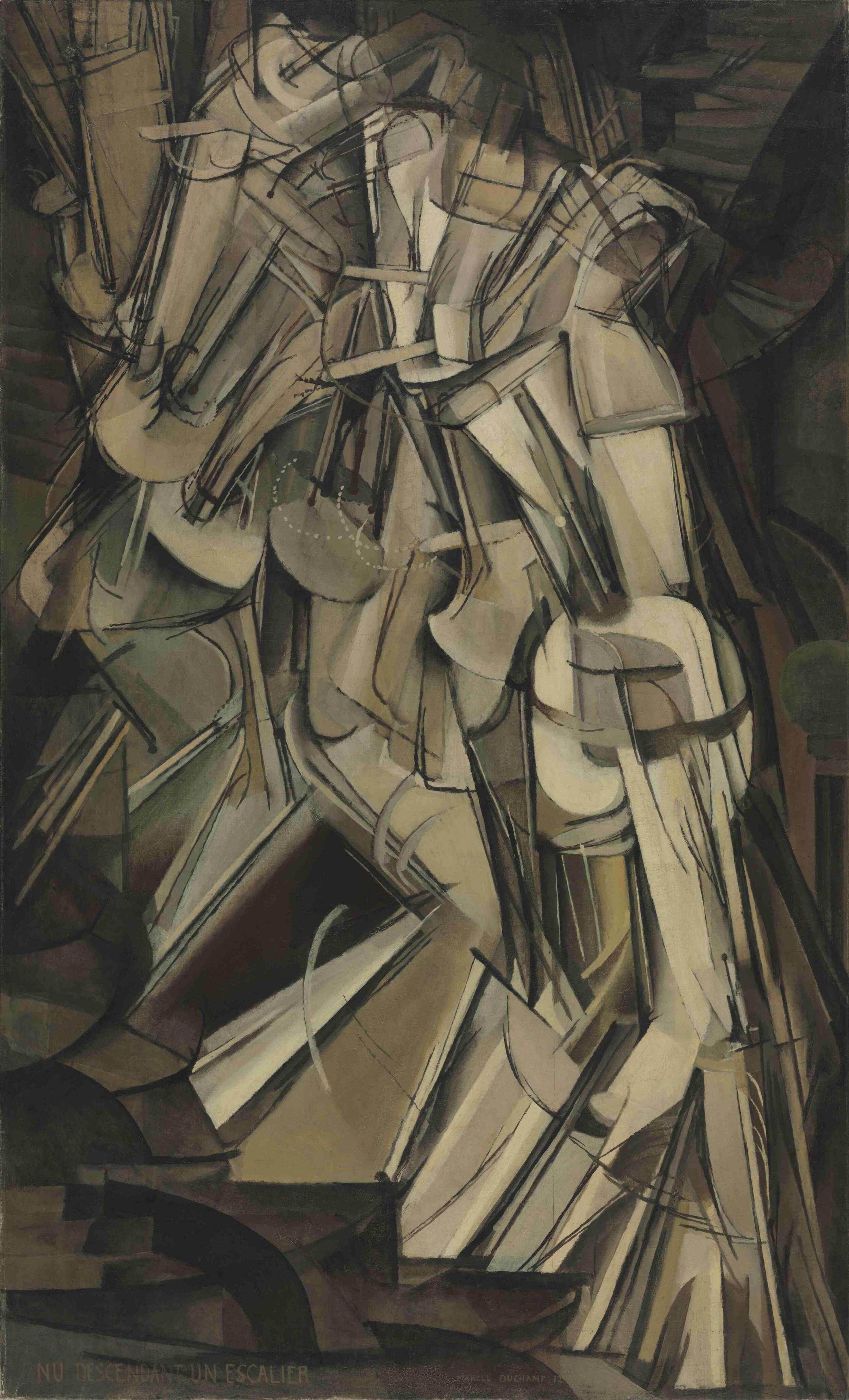Interactive Art
‘Interactive art describes art that relies on the participation of a spectator’ - Tate
Roots of Interactive Art
Golan Levin - gives an excellent introduction to early interactive art works on his site for courses he’s delivered at Carnegie Mellon University.
He starts with Marcel Duchamp, Bicycle Wheel (1913).
‘There’s a lot going on in this ‘revolutionary’ work from the birth of Modernism, including the use of non-fixed form, kinetics, interactivity, and above all, readymade fabrication. There was plenty of kinetic art which followed this, but much was autonomous; only a fraction of it invited human input or operation.’ Golan Levin.
Marcel also explored motion in his earlier works, including Nude Descending a Staircase, No. 2 Marcel Duchamp (1912)
This painting ‘combines elements of both the Cubist and Futurist movements. In the composition, Duchamp depicts motion by successive superimposed images, similar to stroboscopic motion photography. Duchamp also recognized the influence of the chronophotography of Étienne-Jules Marey and others, particularly Muybridge's Woman Walking Downstairs from his 1887 picture series, published as The Human Figure in Motion.’ Wikipedia
Nude Descending a Staircase, No. 2 Marcel Duchamp (1912)
’On April 9th, 1917, just over 100 years ago, Marcel Duchamp achieved what was perhaps the most brilliant and absurd art event of the 20th century.
The story is legend. Duchamp, wanting to submit an artwork to the “unjuried” Society of Independent Artists’ salon in New York—which claimed that they would accept any work of art, so long as the artist paid the application fee—presented an upside-down urinal signed and dated with the appellation “R. Mutt, 1917,” and titled Fountain.
The Society’s board, faced with what must have seemed like a practical joke from an anonymous artist, rejected Fountain on the grounds that it was not a true work of art. Duchamp, who was a member of that board himself, resigned in protest.’ - How Duchamp’s Urinal Changed Art Forever, Jon Mann, Artsy.net
See more examples of early interactive art on Golan Levin’s - Roots of Interactive Arts page.
Golan Levin
Golan Levin is also famous for his interactive / reactive media performances using body and voice, such as Messa di Voce (2003).
Also see his notes / overview of Full-Body Interactive Art - Interactions with Cameras and Screens here
See more of Golan Levin’s own work and research at: http://www.flong.com/
Interactive Art - TATE DEFINITION
Interactive art describes art that relies on the participation of a spectator
’Interactive art emerged in the late 1950s in parallel with artists’ desires to find less alienating and exclusive environments in which to show art. As the street, the warehouse or the shop front became their choice of venue, the art also became more participatory and inclusive.
Artists designed sculptures that could be touched and played with. Niki de Saint Phalle built the monumental walk-in sculpture Golem in Rabinovich Park, Jerusalem, which has a children’s slide. In 1971 Gordon Matta-Clark cooked a pig under Brooklyn Bridge and served 500 pork sandwiches as part of the performance.
Interactive art is also computer based, with the participant responding to the technology set up by the artist like the public artworks of Rafael Lozano-Hemmer. Interactive art is also associated with relational aesthetics. ‘
https://www.tate.org.uk/art/art-terms/i/interactive-art
Also see: Interactive media page and other threads in this section for more contemporary examples
Reading:
The Language of New Media By Lev Manovich
https://mitpress.mit.edu/books/language-new-media
Beyond New Media Art by Domenico Quaranta




